
FOT-F3
FIBER OPTIC TRANSCEIVER
USER’S MANUAL


FOT-F3 USER’S MANUAL i
NOTICE
Cabletron Systems reserves the right to make changes in specifications
and other information contained in this document without prior notice.
The reader should in all cases consult Cabletron Systems to determine
whether any such changes have been made.
The hardware, firmware, or software described in this manual is subject
to change without notice.
IN NO EVENT SHALL CABLETRON SYSTEMS BE LIABLE FOR ANY
INCIDENTAL, INDIRECT, SPECIAL, OR CONSEQUENTIAL
DAMAGES WHATSOEVER (INCLUDING BUT NOT LIMITED TO LOST
PROFITS) ARISING OUT OF OR RELATED TO THIS MANUAL OR
THE INFORMATION CONTAINED IN IT, EVEN IF CABLETRON
SYSTEMS HAS BEEN ADVISED OF, KNOWN, OR SHOULD HAVE
KNOWN, THE POSSIBILITY OF SUCH DAMAGES.
© Copyright 1996 by:
Cabletron Systems, Inc.,
P.O. Box 5005, Rochester, NH 03866-5005
All Rights Reserved
Printed in the United States of America
Part Number: 9030461-01 July 1996
LANVIEW
is a registered trademark of Cabletron Systems, Inc.
LAN-MD
,
FOT-F3
,
FOMIM-32/36/38
,
MMAC
,
NBR-220
, and
IRM
are
trademarks of Cabletron Systems, Inc.
Velcro
is a registered trademark of Velcro Industries, B.V.
Printed on Recycled Paper

ii FOT-F3 USER’S MANUAL
FCC NOTICE
This device complies with Part 15 of the FCC rules. Operation is subject
to the following two conditions: (1) this device may not cause harmful
interference, and (2) this device must accept any interference received,
including interference that may cause undesired operation.
Note:
This equipment has been tested and found to comply with the
limits for a Class A digital device, pursuant to Part 15 of the FCC rules.
These limits are designed to provide reasonable protection against
harmful interference when the equipment is operated in a commercial
environment. This equipment uses, generates, and can radiate radio
frequency energy and if not installed in accordance with the operator’s
manual, may cause harmful interference to radio communications.
Operation of this equipment in a residential area is likely to cause
interference in which case the user will be required to correct the
interference at his own expense.
Warning:
Changes or modifications made to this device which are not
expressly approved by the party responsible for compliance could void
the user’s authority to operate the equipment.
DOC NOTICE
This digital apparatus does not exceed the Class A limits for radio noise
emissions from digital apparatus set out in the Radio Interference
Regulations of the Canadian Department of Communications.
Le présent appareil numérique n’émet pas de bruits radioélectriques
dépassant les limites applicables aux appareils numériques de la class
A prescrites dans le Règlement sur le brouillage radioélectrique édicté
par le ministère des Communications du Canada.

FOT-F3 USER’S MANUAL iii
VCCI NOTICE
This equipment is in the 1st Class Category (information equipment to
be used in commercial and/or industrial areas) and conforms to the
standards set by the Voluntary Control Council for Interference by
Information Technology Equipment (VCCI) aimed at preventing radio
interference in commercial and/or industrial areas.
Consequently, when used in a residential area or in an adjacent area
thereto, radio interference may be caused to radios and TV receivers,
etc.
Read the instructions for correct handling
.

iv FOT-F3 USER’S MANUAL
DECLARATION OF CONFORMITY
Application of Council Directive(s):
89/336/EEC
73/23/EEC
Manufacturer’s Name:
Cabletron Systems, Inc.
Manufacturer’s Address:
35 Industrial Way
PO Box 5005
Rochester, NH 03867
European Representative Name:
Mr. J. Solari
European Representative Address:
Cabletron Systems Limited
Nexus House, Newbury
Business Park
London Road, Newbury
Berkshire RG13 2PZ,
England
Conformance to Directive(s)/Product Standards:
EC Directive 89/336/EEC
EC Directive 73/23/EEC
EN 55022
EN 50082-1
EN 60950
Equipment Type/Environment:
Networking Equipment, for
use in a Commercial or Light
Industrial Environment.
We the undersigned, hereby declare that the equipment packaged with this notice
conform to the above directives.
Manufacturer Legal Representative in Europe
Mr. Richard Michaud Mr. J. Solari
______________________________ ________________________
Full Name Full Name
Manager of Engineering Services Managing Director - E.M.E.A.
______________________________ ________________________
Title Title
Rochester, NH, USA Newbury, Berkshire, England
______________________________ ________________________
Location Location

FOT-F3 USER’S MANUAL v
CONTENTS
CHAPTER 1 INTRODUCTION
1.1 USING THIS MANUAL...............................................................1-1
1.2 CONVENTIONS.........................................................................1-2
1.3 OVERVIEW OF THE FOT-F3....................................................1-2
1.3.1 Connections...............................................................1-3
1.3.2 Distance and Cable Type...........................................1-4
1.3.3 LANVIEW LEDs.........................................................1-5
1.3.4 Application..................................................................1-7
1.4 GETTING HELP.........................................................................1-9
1.5 RELATED MANUALS ..............................................................1-10
CHAPTER 2 INSTALLATION REQUIREMENTS
2.1 NETWORK DESIGN GUIDELINES ...........................................2-1
2.1.1 Fiber Optic Requirements..........................................2-1
2.1.2 AUI Cable Requirements ...........................................2-2
CHAPTER 3 INSTALLATION
3.1 UNPACKING THE FOT-F3........................................................3-1
3.2 CONNECTING THE FOT-F3 TO THE NETWORK....................3-2
3.2.1 Setting the SQE Switch..............................................3-2
3.2.3 Connecting the Fiber Optic Cable..............................3-5
3.3 SURFACE MOUNTING THE FOT-F3........................................3-8
3.4 CABLE SUPPORT INSTALLATION...........................................3-9
3.4.1 Cable Strain Relief for Surface Mounted FOT-F3......3-9
3.4.2 Cable Strain Relief for Non-Mounted FOT-F3..........3-10

CONTENTS
vi FOT-F3 USER’S MANUAL
CHAPTER 4 TESTING AND TROUBLESHOOTING
4.1 INSTALLATION CHECK-OUT ...................................................4-1
4.1.1 Testing the Fiber Optic Link Segment........................4-1
4.1.2 Testing the FOT-F3 Fiber Optic Transceiver .............4-3
4.2 USING LANVIEW.......................................................................4-4
APPENDIX A SPECIFICATIONS
A.1 FIBER OPTIC INTERFACE.................................................. A-1
A.2 AUI CONNECTOR................................................................ A-3
A.3 POWER SUPPLY .................................................................A-3
A.4 ENVIRONMENTAL............................................................... A-4
A.5 AGENCY APPROVALS........................................................ A-4
A.6 PHYSICAL ............................................................................A-4

FOT-F3 USER’S MANUAL 1-1
CHAPTER 1
INTRODUCTION
Welcome to Cabletron Systems
FOT-F3 Fiber Optic
Transceiver User’s Manual
. This manual serves as a simple
installation and reference guide for the FOT-F3 transceiver.
You should have a general working knowledge of Ethernet or
IEEE 802.3 type data communications networks and their
physical layer components before installing the FOT-F3.
1.1 USING THIS MANUAL
You should read through this manual to gain a full understanding
of the FOT-F3 and its capabilities.
This manual is organized as follows:
Chapter 1,
Introduction
, discusses the capabilities of the
FOT-F3, outlines the conventions used in this manual, provides
information on how to receive additional help, and provides a list
of related manuals.
Chapter 2,
Installation Requirements
, contains the network
and hardware requirements that must be met before installing
the FOT-F3.
Chapter 3,
Installation
, contains steps for unpacking the
FOT-F3, setting the SQE switch, connecting the transceiver to
the network, connecting the transceiver to an active Ethernet
device, and, if desired, mounting the transceiver with the Velcro
mounts provided with the unit.

CHAPTER 1:
INTRODUCTION
1-2 FOT-F3 USER’S MANUAL
Chapter 4,
Testing and Troubleshooting
, contains procedures
for verifying the proper installation of the FOT-F3. It also
describes LANVIEW LEDs and their function.
Appendix A,
Specifications
, provides the specifications for the
FOT-F3 transceiver.
1.2 CONVENTIONS
The following conventions are used in this manual:
•
Note
— Calls the reader’s attention to any item of
information that may be of special importance.
•
Caution
— Contains information essential to avoid damage
to the equipment.
1.3 OVERVIEW OF THE FOT-F3
The FOT-F3 Fiber Optic Transceiver (Fiber Optic Medium
Attachment Unit or FOMAU) (Figure 1-1) is a device that allows
the connection of two Ethernet devices using single mode fiber
optic cable. The FOT-F3 uses the same signaling protocols
specified by FOIRL and is completely IEEE 802.3 compatible at
the AUI interface (the AUI port connects the transceiver to a
device or workstation via an AUI cable).
The FOT-F3 also has the Cabletron Systems LANVIEW
diagnostic system that monitors network activity and can help to
quickly diagnose physical layer problems using its LEDs.

OVERVIEW OF THE FOT-F3
FOT-F3 USER’S MANUAL 1-3
Figure 1-1 FOT-F3
1.3.1 Connections
The FOT-F3 connects two active Ethernet devices using an AUI
cable and a fiber optic link segment. Devices such as repeaters,
multiport repeaters, multiport transceivers or host systems are
connected using fiber optic cables.
The FOT-F3 is fully compatible with IEEE 802.3 and uses the
same signaling specified in FOIRL specifications. It provides the
flexibility to connect to networks using Ethernet Version 1,
Version 2, and/or IEEE 802.3 equipment through an AUI port.
However, the FOT-F3 uses 1300 nm wave-length optical
transmitters and receivers and should be used only with
Cabletron Systems Ethernet single mode products such as the
FOMIM-36, FOMIM-32, and the FOMIM-38.
802.3 COMPATIBLE SINGLE MODE
FIBER OPTIC TRANSCEIVER
with LANVIEW
®
FOT-F3
SQE
0461-01
P
W
R
S
Q
E
X
M
T
R
C
V
C
L
N
L
N
K
TX
RX
SN
1300nm
DB15 AUI Port
SQE Switch
LANVIEW LEDs
ST Fiber Optic Ports
End View
End View
Front View

CHAPTER 1:
INTRODUCTION
1-4 FOT-F3 USER’S MANUAL
A fiber optic cable is connected to the transceiver through ST
fiber optic ports on the FOT-F3. This provides an optical link to
connect the device to the network.
1.3.2 Distance and Cable Type
The FOT-F3 supports single mode fiber optic cable for sizes
such as 8.3/125
µ
m, 8.7/125
µ
m, 9/125
µ
m, and 10/125
µ
m.
You can also use multimode cable such as 62.5/125
µ
m, but
the signal distance will be much shorter.
The signal distance is dependent on the cable type and the
overall system fiber optic budget. If the system budgets and
timing constraints are met, then a distance of over five
kilometers is possible with single mode cable. However,
Cabletron Systems only supports a distance of 5 kilometers. If
using 62.5/125 multimode cable, signal distance is about 2 km.
An AUI cable, up to 50 meters long, is used to connect an
Ethernet device to the AUI port on the transceiver. The AUI
cable must meet specifications for either IEEE 802.3 or
Ethernet Version 1 or Version 2.
Signal Quality Error (SQE) Test
The FOT-F3 has a Signal Quality Error (SQE) Test Enable
Switch that allows the enabling or disabling of the SQE
(“heartbeat”) test function. The SQE test enables the FOT-F3
transceiver to generate a signal to ensure that the collision
circuit and path are operational between the FOT-F3 and the
Ethernet device attached to the AUI port of the transceiver.

OVERVIEW OF THE FOT-F3
FOT-F3 USER’S MANUAL 1-5
The SQE test signal is generated after the FOT-F3 has
transmitted a data packet. This signal is generated only between
the FOT-F3 and the device; it is not transmitted onto the
network.
Note:
Do not enable the SQE test feature when the FOT-F3 is
attached to a repeater or Ethernet Version 1 equipment.
Otherwise, network problems (excess collisions) will result.
1.3.3 LANVIEW LEDs
The FOT-F3 incorporates Cabletron Systems LANVIEW
diagnostic and monitoring system. LANVIEW is a series of LEDs
incorporated into all Cabletron Systems products. If a problem
arises, troubleshooting of power failures, collisions, cable faults,
or many other problems can be diagnosed rapidly using these
LEDs.
The LANVIEW LEDs are shown in Figure 1-2 followed by a brief
description of each LED.
Note:
Chapter 4,
Testing and Troubleshooting
,
provides more
detail about the LANVIEW LEDs and how to interpret them for
troubleshooting.
Figure 1-2 LANVIEW LEDs
P
W
R
S
Q
E
X
M
T
R
C
V
C
L
N
L
N
K
0461-05

CHAPTER 1:
INTRODUCTION
1-6 FOT-F3 USER’S MANUAL
PWR (Power)
When on, this green LED indicates that the FOT-F3 is receiving
power.
SQE (Signal Quality Error) Test Function
When on, this yellow LED indicates that SQE is enabled.
XMT (Transmit)
This green LED flashes to indicate that the FOT-F3 is
transmitting frames onto the network.
RCV (Receive)
This yellow LED flashes to indicate that the FOT-F3 is receiving
frames from the network.
CLN (Collision)
This red LED flashes to indicate that the FOT-F3 is detecting a
collision on the network.
LNK (Link OK)
When on, this green LED indicates that a link has been
established between the FOT-F3 and the device at the other end
of the fiber optic link segment.

OVERVIEW OF THE FOT-F3
FOT-F3 USER’S MANUAL 1-7
1.3.4 Application
The FOT-F3 can be configured into your network in many ways.
For example, in Figure 1-3, a fiber optic link segment (4) is
attached to a Cabletron Systems Multi Media Access Center
(MMAC) (5) with a FOMIM-32/36/38. The MMAC serves as an
intelligent repeater hub that links the fiber optic link segment to
other network segments, regardless of media type. The link
segment is attached to the FOT-F3 (3). An Ethernet device, such
as a workstation (1), is connected to the FOT-F3 through an AUI
cable (2).
Figure 1-3 FOT-F3 Setup, Example 1
1 2 3 4 5 6
1. Workstation
2. AUI Cable
3. FOT-F3
4. Fiber Optic Link
5. MMAC with a Fiber Optic MIM
0461-02

CHAPTER 1:
INTRODUCTION
1-8 FOT-F3 USER’S MANUAL
In another example, shown in Figure 1-4, a FOT-F3 (3) is
connected to an MMAC (1) by an AUI cable (2) attached to an
Intelligent Repeater Module (IRM) in the MMAC. A lengthy fiber
optic link segment (4) of up to five kilometers runs from the
FOT-F3 (3) to another FOT-F3 (5). The hardware connection is
completed via another AUI cable (6) to a Cabletron Systems
NBR-220 Ethernet Bridge (7) configured to provide an AUI
interface. Through the bridge, the host device communicates
with other devices on a larger Ethernet network attached to the
AUI port of the bridge.
Figure 1-4 FOT-F3 Setup, Example 2
1. MMAC
2. AUI Cable
3. FOT-F3
4. Fiber Optic Link
5. FOT-F3
6. AUI Cable
7. NBR-220 Bridge
0461-03

GETTING HELP
FOT-F3 USER’S MANUAL 1-9
1.4 GETTING HELP
If you need additional support related to this device, or if you
have any questions, comments, or suggestions concerning this
manual, contact Cabletron Systems Technical Support:
By phone (603) 332-9400
Monday – Friday; 8
A.M
. – 8
P.M
.
Eastern Time
By CompuServe GO CTRON from any ! prompt
By Internet mail [email protected]
By FTP ctron.com (134.141.197.25)
Login
anonymous
Password
your email address
Before calling Cabletron Systems Technical Support, have the
following information ready:
• A description of the failure
• A description of any action(s) already taken to resolve the
problem (e.g., changing mode switches, rebooting the unit,
etc.)
• A description of your network environment (layout, cable
type, etc.)
• Network load and frame size at the time of trouble (if known)
• The serial and revision numbers of all Cabletron Systems
products in the network

CHAPTER 1:
INTRODUCTION
1-10 FOT-F3 USER’S MANUAL
• The device history (i.e., have you returned the device
before, is this a recurring problem, etc.)
• Any previous Return Material Authorization (RMA) numbers
1.5 RELATED MANUALS
Use the manuals identified below to supplement the procedures
and other technical data provided in this manual. The
procedures contained in these manuals are referenced only.
• Cabletron Systems
LAN-MD Portable Ethernet Tester
User’s Manual
• Cabletron Systems
FOMIM-32/36/38 Fiber Optic Interface
Module Installation Guide

FOT-F3 USER’S MANUAL 2-1
CHAPTER 2
INSTALLATION REQUIREMENTS
Before installing the FOT-F3 Fiber Optic Transceiver, all
conditions, guidelines, specifications, and requirements
included in this chapter and Appendix A must be met to ensure
satisfactory performance from the FOT-F3. Failure to follow
these guidelines may result in unsatisfactory network
performance.
2.1 NETWORK DESIGN GUIDELINES
The following design guidelines must be met when connecting
devices using the FOT-F3.
2.1.1 Fiber Optic Requirements
• The fiber optic link segments should consist of single mode
8/125 - 12/125
µ
m fiber optic cabling. You can also use
multimode 62.5/125
µ
m fiber optic cabling, but signal
distance will be much shorter (about 2 km).
• The link segment must be tested with a fiber optic
attenuation test set that is adjusted for a 1300 nm
wavelength. This test verifies if the signal loss in a cable is
within an acceptable level of 9.0 dB or less for any given
single mode fiber optic link.

CHAPTER 2:
INSTALLATION REQUIREMENTS
2-2 FOT-F3 USER’S MANUAL
• When determining the maximum fiber optic cable length,
the fiber optic budget and total network propagation delay
should be calculated and taken into consideration before
fiber runs are incorporated into any network design. Fiber
optic budget is the combination of the optical loss due to the
fiber optic cable, in-line splices, and fiber optic connectors.
Propagation delay is the amount of time it takes a packet to
travel from the sending device to the receiving device. If the
total one way propagation delay between any two nodes
anywhere in the network exceeds 25.6
µ
s, use some form
of segmentation, such as bridging or routing, to divide the
problem signal paths into smaller segments.
2.1.2 AUI Cable Requirements
• The AUI cable
connecting the transceiver to a device must
be an Ethernet Version 1, Version 2, and/or IEEE 802.3 type
cable that matches the type of device being attached to the
AUI port.
• The AUI cable must not exceed 50 meters (164 feet) in
length. If a 28 AWG AUI cable (office AUI) is used, limit the
cable length to 16 meters (50 feet).
Page is loading ...
Page is loading ...
Page is loading ...
Page is loading ...
Page is loading ...
Page is loading ...
Page is loading ...
Page is loading ...
Page is loading ...
Page is loading ...
Page is loading ...
Page is loading ...
Page is loading ...
Page is loading ...
Page is loading ...
Page is loading ...
Page is loading ...
Page is loading ...
Page is loading ...
Page is loading ...
Page is loading ...
Page is loading ...
Page is loading ...
Page is loading ...
-
 1
1
-
 2
2
-
 3
3
-
 4
4
-
 5
5
-
 6
6
-
 7
7
-
 8
8
-
 9
9
-
 10
10
-
 11
11
-
 12
12
-
 13
13
-
 14
14
-
 15
15
-
 16
16
-
 17
17
-
 18
18
-
 19
19
-
 20
20
-
 21
21
-
 22
22
-
 23
23
-
 24
24
-
 25
25
-
 26
26
-
 27
27
-
 28
28
-
 29
29
-
 30
30
-
 31
31
-
 32
32
-
 33
33
-
 34
34
-
 35
35
-
 36
36
-
 37
37
-
 38
38
-
 39
39
-
 40
40
-
 41
41
-
 42
42
-
 43
43
-
 44
44
Cabletron Systems EPIM F3 User manual
- Type
- User manual
Ask a question and I''ll find the answer in the document
Finding information in a document is now easier with AI
Related papers
-
 Cabletron Systems FOT-F3 User manual
Cabletron Systems FOT-F3 User manual
-
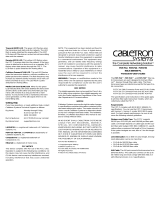 Cabletron Systems FOT-F24 User manual
Cabletron Systems FOT-F24 User manual
-
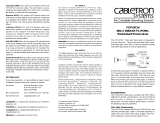 Cabletron Systems FOT-DF24 User manual
Cabletron Systems FOT-DF24 User manual
-
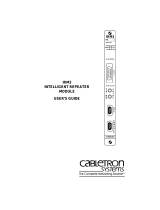 Cabletron Systems MT8-MIM User manual
Cabletron Systems MT8-MIM User manual
-
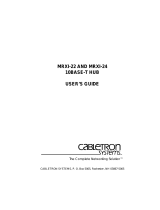 Cabletron Systems EPIM F3 User manual
Cabletron Systems EPIM F3 User manual
-
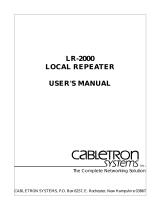 Cabletron Systems LR-2000 User manual
Cabletron Systems LR-2000 User manual
-
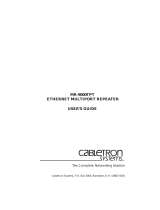 Cabletron Systems MR-9000TPT User manual
Cabletron Systems MR-9000TPT User manual
-
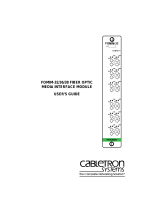 Cabletron Systems FOMIM-36 User manual
Cabletron Systems FOMIM-36 User manual
-
Enterasys Networks EPIM F3 User manual
-
Cabletron Systems ST-500 Installation guide
Other documents
-
iiyama MD 063B7240 User manual
-
Nikon Switch KT-10FV2 User manual
-
3com Marine Radio 5101T-FB-SMA User manual
-
Steel Core 39807 User manual
-
Planet ET-118 User manual
-
Transition Networks E-FL/RED-SIC User manual
-
Transition Networks ETHERNET E-TBT-MC01(LC) User manual
-
Black Box 724-746-5500 User manual
-
Transition Networks E- FL/RED-MC01(SMA) User manual
-
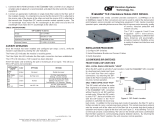 Omnitron Systems Technology iConverter T1/E1 User manual
Omnitron Systems Technology iConverter T1/E1 User manual




















































